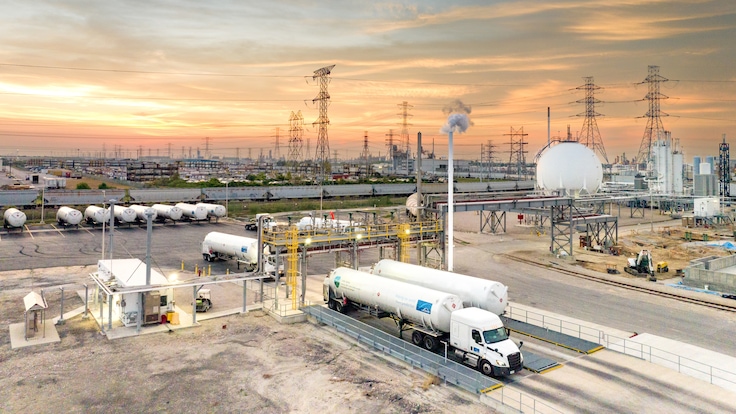Hydrogen Applications
As the world unfolds the full potential of the lightweight gas, the scope for its application increases beyond its traditional uses.


We produce gray, blue and green hydrogen from a range of feedstocks and natural resources.
Gray hydrogen is produced from natural gas, LPG or naphtha via steam reforming (SMR) or partial oxidation. Pressure swing adsorption plants are used to obtain H2 from hydrogen-rich synthesis gases or refinery and petrochemical gases.
The next step in the clean energy hydrogen colors is blue - by combining SMR with carbon capture and storage technologies, we are able to produce what is known as blue hydrogen.
Last but not least, green hydrogen can be generated via steam reforming using bio-based feedstock, or via electrolysis, powered with electricity generated from renewable sources, such as wind and solar. Linde offers end-to-end solutions and expertise in green hydrogen production capacity in electrolysis projects throughout the world.
With over 150 SMR and PSAs worldwide and 80+electrolysis plants installed, Linde is one of the leading companies in hydrogen production - from gray, through blue to green!
Carbon capture for use or storage
Electrolysis for green hydrogen

Once produced, hydrogen requires further processing. Typical steps include the removal of impurities, the separation of carbon dioxide (CO2), compression and/or cryogenic liquefaction.
Linde has long-standing experience in separating synthesis gas - a mixture of hydrogen, carbon monoxide and carbon dioxide that is produced during the steam reforming process - through cryogenic processes (condensation or methane scrubbing), post CO2 removal.
To enable storage and transportation of large quantities using less space, hydrogen is converted from its gaseous form to liquid hydrogen (LH2) using a hydrogen liquefier, that cools the gas down to minus 253 °C. At 170 TPD, Linde is the world-leader in liquid hydrogen production capacity with the majority of all hydrogen liquefaction plants having been built by Linde.

Once the hydrogen has been processed, it needs to be transported to the point of use. With approximately 1,000km of hydrogen pipeline and the largest fleet of hydrogen trailers in the world, Linde offers reliable and efficient transportation of both gaseous and liquid hydrogen.
For storage of liquid hydrogen at the customer site, we provide cryogenic tanks with capacities ranging from 3,000 to over 100,000 liters.
For high-capacity storage of gaseous hydrogen, underground salt caverns are an option and can act as a backup for a pipeline network. Linde has been operating the world’s first commercial high-purity hydrogen cavern for over a decade in Texas.
Another transportation option for hydrogen is to deliver it to the point of use in converted form, i.e., as ammonia (NH3) or methanol (CH3OH). When green hydrogen is used as a feedstock, these products are called green ammonia and green methanol, respectively. Find out more in the Applications section.
Building on our long-standing expertise in this area, we work closely with customers to find the perfect fit for every storage and distribution challenge.
Converting the natural gas grid for H2 delivery
Storing hydrogen in underground salt caverns

Leveraging the synergies created between Linde Engineering and Linde Gas, we can provide a one-stop-shop experience to our customers - from leading production and processing technologies through reliable and safe plant operations to flexible supply modes, we are uniquely prepared to cater to each customer’s specific needs. Our engineers are experienced in developing integrated solutions that will address the challenges you need to tackle.
Pressure, volume and flow rate are all key factors which must be considered when determining the most appropriate and cost-effective gas supply mode. Hydrogen can be supplied in bulk, in gaseous or liquid form, and may be stored in tanks located at the customer’s site.
For larger volumes, our ECOVAR®on-site supply systems are available and are built around standardized components to ensure maximum cost efficiencies. Additionally, we offer customized on-site solutions when even larger quantities of hydrogen are required.